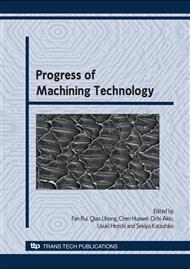p.448
p.452
p.456
p.460
p.465
p.469
p.473
p.478
p.482
Experimental and Numerical Study of Cutting Forces and Temperature Fields when Dry Turning Aluminum Alloy
Abstract:
A Lagrange finite element model is presented that simulates cutting forces and temperature distributions when orthogonal turning aluminum alloy. The effect of the large strain, strain-rate and temperature associated with cutting on the material properties is taken into account. The model predicts chip geometry, stress, strain and temperature distribution in the workpiece, chip, and tool. Cutting experiments were performed to validate the model.
Info:
Periodical:
Pages:
465-468
Citation:
Online since:
February 2009
Authors:
Keywords:
Price:
Сopyright:
© 2009 Trans Tech Publications Ltd. All Rights Reserved
Share:
Citation:


